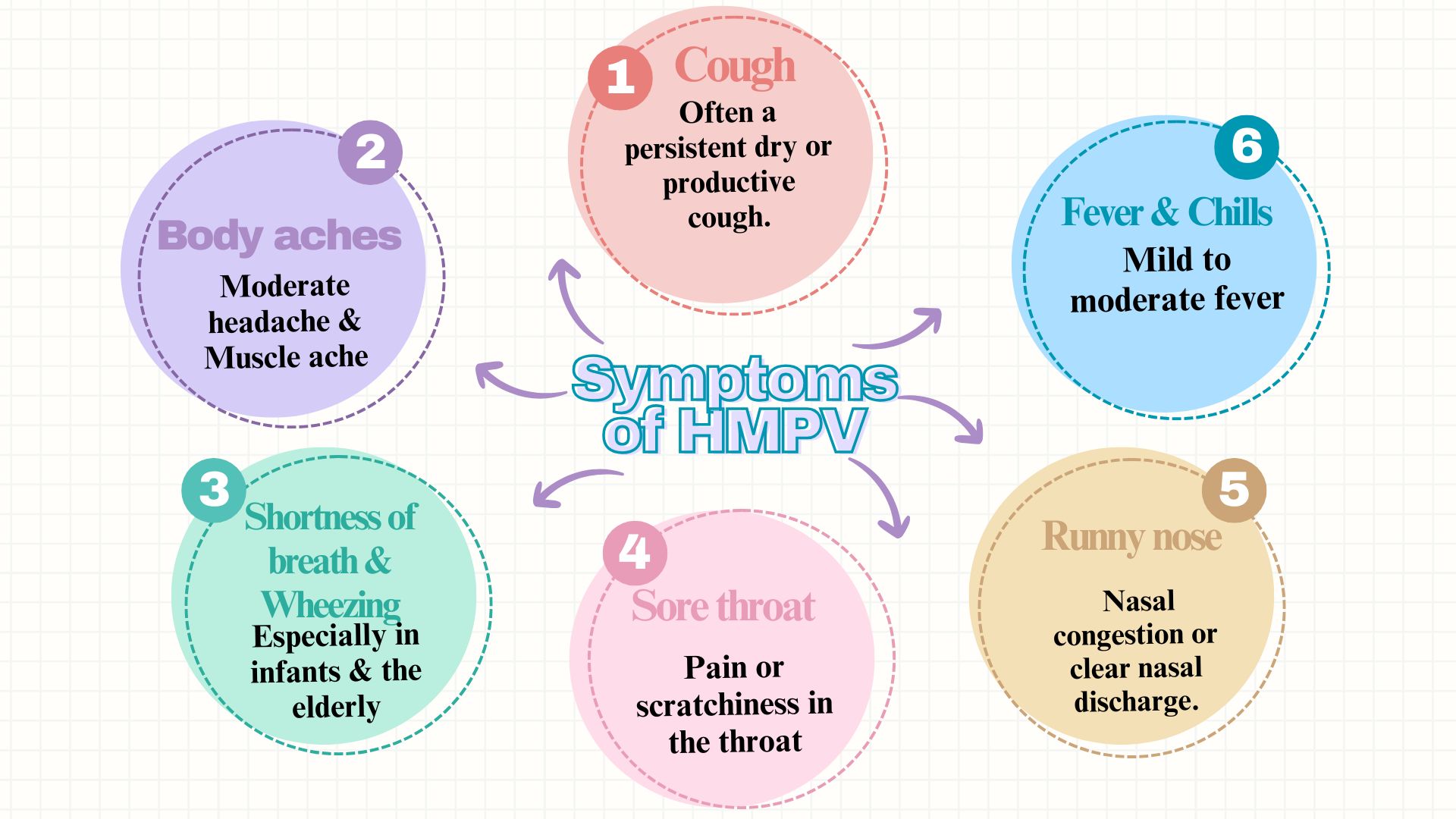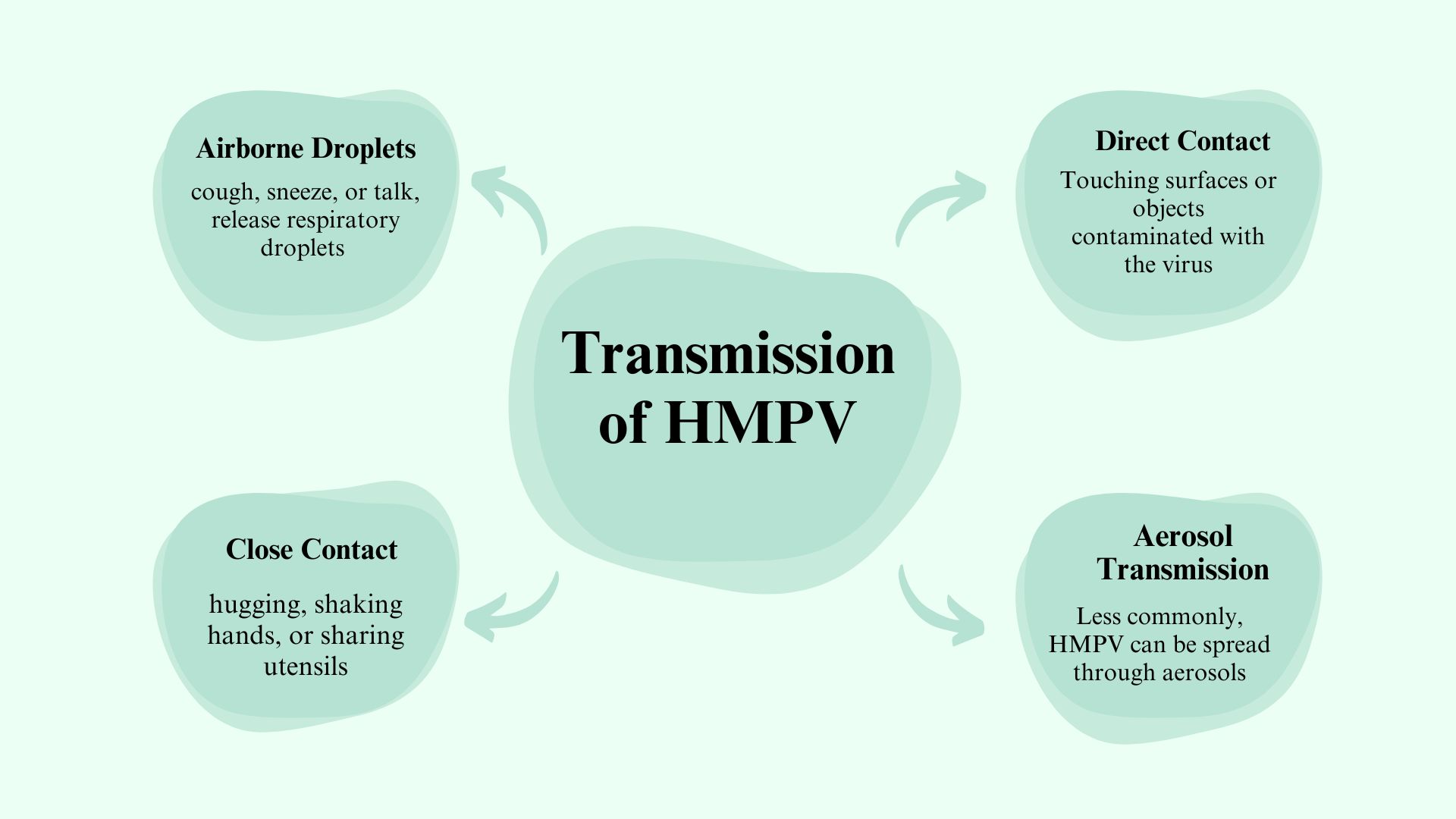As the world marks five years since the onset of COVID-19, China is again in the spotlight of global health concerns due to an outbreak of human metapneumovirus (HMPV) reported in multiple regions. According to news reports and social media posts, China is seeing a fresh outbreak of a little-known virus known as human metapneumovirus (HMPV); however, officials have yet to confirm this.
The World Health Organization (WHO) has consistently warned against complacency, with Director-General Dr Tedros Adhanom Ghebreyesus emphasizing that the next pandemic “can come at any moment.”
Official statistics from the Chinese Center for Disease Control and Prevention show that the incidence of several flu-like illnesses caused by multiple viruses, including Mycoplasma pneumoniae, HMPV, influenza A, and COVID-19, is increasing in China, according to data as of the last week of 2024. The Northern provinces have shown a significant increase in HMPV incidence. Despite the increase in respiratory ailments, neither the Chinese government nor the World Health Organization (WHO) have issued a formal warning or declared an emergency.
Developments in China related to the global discussions surrounding HMPV
According to Reuters, China’s disease control agency announced on Friday the launch of a monitoring system for pneumonia of unknown origin. This initiative is intended to enhance preparedness in comparison to the early phases of the Covid-19 outbreak. Authorities are establishing laboratory reporting processes and protocols for case verification to better manage emerging pathogens, as stated by state broadcaster CCTV. The National Disease Control and Prevention Administration (NCDPA) has released guidelines mandating laboratories to report cases, while disease control agencies will confirm and address them. Official statistics show a rise in respiratory infections for the week of December 16 to 22.
Official Statement from China about HMPV
China downplayed concerns of a huge flu outbreak overwhelming hospitals, claiming that respiratory disease diagnoses this winter were less severe than the previous year.
“Respiratory infections typically reach their highest incidence during the winter season in the northern hemisphere,” stated Mao Ning, Chinese Foreign Ministry spokesperson, in response to inquiries regarding the prevalence of influenza A and other respiratory diseases in China.
A spokesperson for the Chinese foreign ministry, Mao Ning, stated, “The illnesses seem to be milder and spread on a smaller scale compared to last year.”
She also emphasized that it is safe for foreigners to visit China.
“I can guarantee that the Chinese government prioritizes the health of both its citizens and foreigners in the country. Traveling in China is safe,” she added.
Could HMPV Lead to Another Pandemic?
Social media claims about overcrowded hospitals lack official support, but the NCDPA reports a notable rise in respiratory infections from December 16 to 22. This timing raises concerns amid ongoing debates on global health transparency. Reliable sources provide insufficient information on a potential HMPV outbreak in China, complicating pandemic risk assessments.
As the world turns away from COVID-19 restrictions, questions about the virus’s origins linger, especially regarding China’s transparency, which hinders understanding the pandemic. The WHO emphasized on December 30, 2024, the need for data sharing: “Without openness and collaboration, the global community cannot effectively prepare for future health crises.”
What is human metapneumovirus (HMPV)?
Human metapneumovirus (hMPV) is a known for acute respiratory infections. HMPV induces influenza-like symptoms. The virus mainly impacts the upper respiratory tract, though it can sometimes lead to illnesses in the lower respiratory system. HMPV is more commonly seen during the winter and early spring months.
Taxonomy of HMPV
HMPV, according to China’s CDC, is an RNA virus from the Pneumoviridae family and the Metapneumovirus genus.
- Realm: Riboviria
- Kingdom: Orthornavirae
- Phylum: Negarnaviricota
- Class: Monjiviricetes
- Order: Mononegavirales
- Family: Pneumoviridae
- Genus: Metapneumovirus
- Species: Human metapneumovirus
History of HMPV
Unlike COVID-19, which emerged as a new hazard to human health, HMPV has been recognized by the medical community for more than two decades. The virus was first discovered by Dutch researchers in 2001 while studying children with respiratory infections, although it has been circulating as a common respiratory disease for at least six decades worldwide. Cases of HMPV were recorded in 2011-12 in the United States, Canada, and Europe.
Incubation Period of HMPV
HMPV symptoms are comparable to those of other flu-like infections, such as coughing, fever, and a stuffy or runny nose. HMPV typically causes symptoms comparable to the common cold, which last around 2-5 days and resolve on their own.
Symptoms of HMPV
In some situations, unwell patients may have shortness of breath, which can lead to bronchitis (inflammation of the lungs’ airways) or pneumonia (inflammation of the lungs themselves). Some problems include bronchiolitis, bronchitis, pneumonia, asthma or COPD flare-ups, and ear infections (otitis media). The duration of the disease is determined by the severity of the patient’s symptoms, but it is typically comparable to the flu.

Diagnosis of HMPV
Recognizing the symptoms of HMPV infection is critical for accurate diagnosis and treatment. For further confirmation, PCR testing of respiratory samples, as well as antigen and antibody assays, can provide help.
Seasonality of HMPV
According to statistics from the Enteric Virus Surveillance System (NREVSS) and the CDC’s National Respiratory, HMPV is most active in temperate locations in late winter and early spring. The virus follows seasonal rhythms, with peak activity occurring in the winter and spring months.
Treatment for HMPV
Currently, there is no vaccination for HMPV, raising public health worries about its potential impact. Most instances are mild and can be treated at home with rest and fluids. However, severe cases may necessitate hospitalization, oxygen therapy, or corticosteroid treatment to alleviate symptoms.
Supportive treatment for patients varies depending on the severity of the sickness but typically includes fever reducers, breathing treatments, antihistamines, and other means of providing comfort until the illness disappears.
Transmission of HMPV
HMPV spreads through close contact with an infected person or contaminated surfaces. It typically transmits via droplets from coughing and sneezing, as well as through personal contact like hugging or shaking hands, followed by touching the mouth, nose, or eyes.

How Common Is HMPV?
It’s really common. According to statistics, most people will contract an infection at least once before they reach the age of five. You can become infected several times in your life. Human metapneumovirus causes approximately one-tenth of all respiratory infections in children. Anyone can have HMPV, although certain groups are more vulnerable.
Who is at risk from HMPV?
Children, those with low immune systems, and the elderly are most likely to experience problems from HMPV infection. Most HMPV infections affect children under the age of five. A small proportion of infected children (5-16%) may develop a lower respiratory tract infection, such as pneumonia.
HMPV can cause upper and lower respiratory infections in individuals of all ages. However, it is most commonly seen in young children and older adults, and it is more likely to lead to bronchitis, bronchiolitis, or pneumonia. Although having a history of emphysema, asthma, COPD, or other lung diseases does not increase the likelihood of contracting the infection, it can worsen symptoms after the infection occurs. This also applies to individuals with weakened immune systems, such as those undergoing chemotherapy or recovering from an organ transplant.
Preventive measures for HMPV
The US Centers for Disease Control and Prevention (CDC) recommend various strategies to protect against the virus, including often washing hands with soap and water, avoiding touching the face with unclean hands, and avoiding close contact with infected persons.

Refrences
- https://edition.cnn.com/2024/12/31/china/who-china-covid-origin-data-five-years-intl-hnk/index.html
- https://m.economictimes.com/news/international/global-trends/hmpv-in-china-sparks-concern-is-human-metapneumovirus-similar-to-covid-19-respiratory-illness-flu-like-symptoms-vaccination-what-you-need-to-know/articleshow/116943907.cms
- https://www.newsweek.com/human-metapneumovirus-hmpv-china-outbreak-explainer-2009126
- https://www.reuters.com/world/china/china-steps-up-monitoring-emerging-respiratory-diseases-2024-12-27
- https://www.mirror.co.uk/news/world-news/you-need-know-hmpv-china-34414188
- https://www.dailymail.co.uk/health/article-14247171/Mystery-virus-China-overwhelms-hospitals.html
- https://www.dailymail.co.uk/health/article-12143387/hMPV-virus-youve-never-heard-youll-struggle-tell-apart-Covid-flu.html


A very thorough article. Well explained